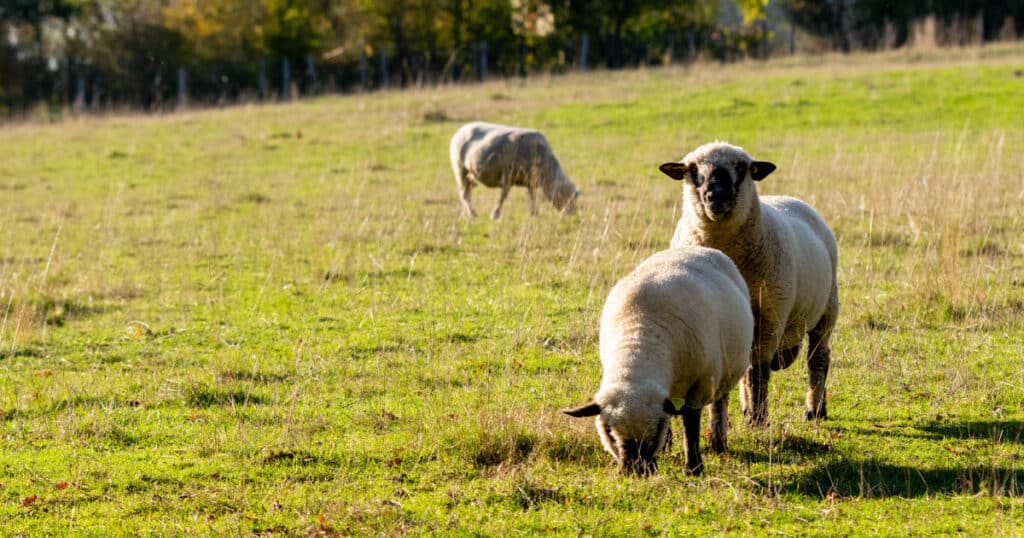How many rams you need to service your ewes during breeding season is crucial to decide before establishing a sheep farm. One ram is capable of breeding a number of ewes by himself. How many ewes per ram is the ideal number to ensure that your ram doesn’t lose conditioning, and that every ewe is bred successfully during her first estrus cycle?
In this article, we’ll discuss how many ewes one ram can breed. We’ll also discuss tips to prepare rams for breeding season and maintain ram health and conditioning during breeding season.
Proper planning prevents weight loss and other problems in rams. It also ensures every ram is capable of breeding as many of your ewes as possible.
You Won’t Need as Many Rams as You Might Think
For most sheep farms find, one mature ram can breed with up to between 35 and 50 ewes every year.
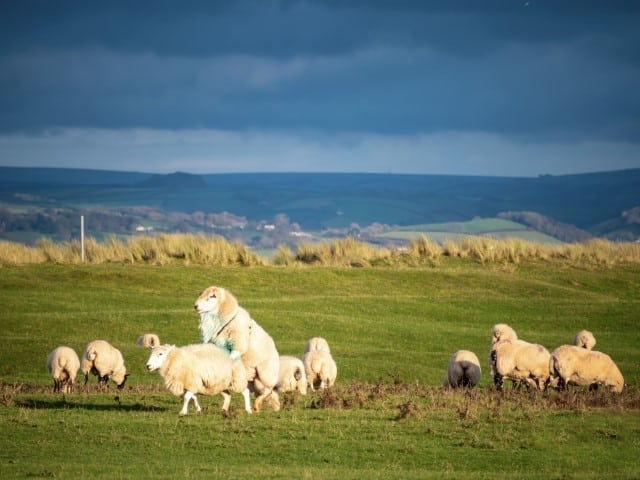
A ram that is between a yearling and five years old can usually breed with between 25 and 50 ewes. Even a well-matured ram lamb can mate with between 15 and 30 ewes. The exact number of ewes a ram will mate with can depend on other factors, like climate. For instance, in many areas of New Mexico with low rainfall, rams will mate with 30 to 40 percent fewer ewes.
Many factors impact how many ewes a ram will mate, such as:
- Body condition
- Temperature
- Season
- Variations between individual animals
A ram older than six years in good physical condition could still be used in pasture or hand breeding.
Be aware that each ram may have its own preferences. Some rams prefer to stick to the same ewes. Occasionally, rams prefer ewes with specific physical characteristics. For example, it may gravitate to white-faced or black-faced ewes.
Most aren’t that picky.
How to Prepare Rams for Breeding Season
Since each ram can usually mate and breed with numerous ewes, it’s especially important to make sure that the stud ram you choose for breeding your sheep is in good health. You want to make sure he will pass on healthy genetic material. Properly preparing your rams for breeding season keeps them healthy and able to mate with more ewes.
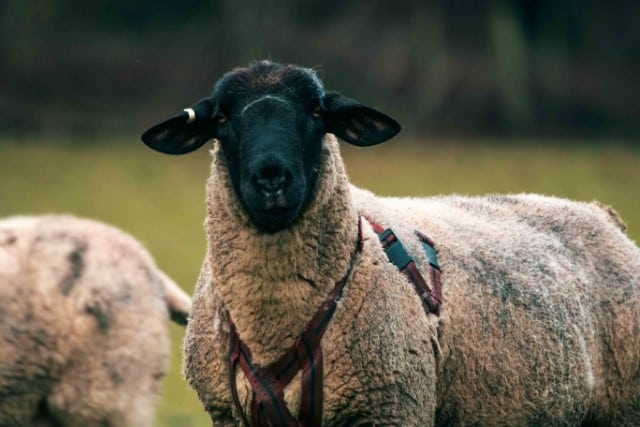
Breeding examinations should be done several weeks before breeding season begins. You will need to examine the ram’s reproductive capacity. During the examinations, make sure the ram’s testicles are firm and palpated. They shouldn’t be soft.
In some breeds of sheep, the ram’s testicles will seem softer in the spring, when most sheep breeds have less fertility. That is normal and not something to worry about if it matches the breeding pattern of your sheep breed.
Later on in the late summer, the ram’s testicles should be firmer for every sheep breed. It should continue to improve as the days keep on getting shorter. There should be a distinction by palpation,. The feeling of a structure described as “knob-like” on the tail of the epididymis of the testes. This is found on the distal. Each testicle’s epididymis should have a similar feeling and shouldn’t have any kind of enlargement or swelling.
Once you have more experience with sheep farming and examining rams, you will get a better sense of what is normal and what might be something to concern you when it comes to this area.
The firmness of the ram’s testicles is a more significant indicator of fertility than size. Size does remain an indicator, though.
A young ram should have a scrotal circumference of more than 30 centimeters. A ram older than 18 months should have a scrotal circumference of more than 35 centimeters.
Test the Ram’s Hips
Something else you should look at when examining your rams is the hips. Hip soundness can often be a problem with older rams. You can test hip soundness by finding out the amount of weight its hips can bear. For a ram’s hip soundness to be normal, it can hold a minimum of its own weight.
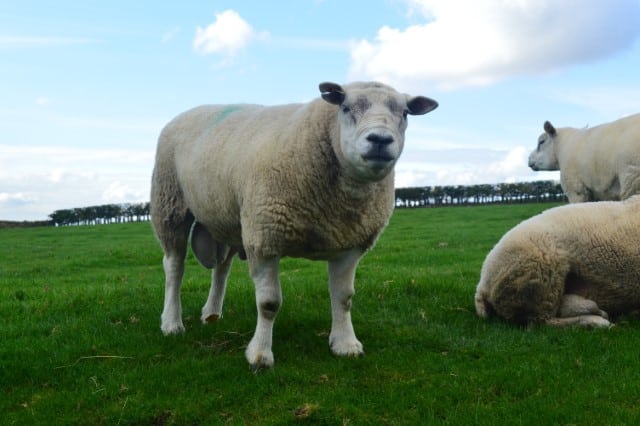
One way to test whether the ram can do this is if it can bear an adult shepherd’s weight. Test what the ram’s hips by:
- Get an assistant to hold the animal and stand behind it.
- Lock your arms and put your hands on the animal’s hips.
- Lean forward so that most of the weight you’re putting on your hands is exerted on the animal’s hips.
The ram should be able to withstand the weight being put on it. If it does not, it will struggle, cry out, or otherwise seem unstable.
Shear the Ram and Trim Its Hooves
You will also need to trim the hooves of your rams a few weeks before breeding season begins. Doing this in advance leaves sufficient time for hooves to heal if you inadvertently cut them too short. Be careful with trimming to try to avoid this problem.
I also recommend that you shear the rams between six weeks and two months prior to breeding when breeding season takes place between August and October. If your rams are going to mate during the late fall or winter instead, you should do the shearing earlier (usually by the middle of September at the latest). This will give the rams time to replenish their fleece for cold temperatures while still being agile and relatively cool during their busy mating season.
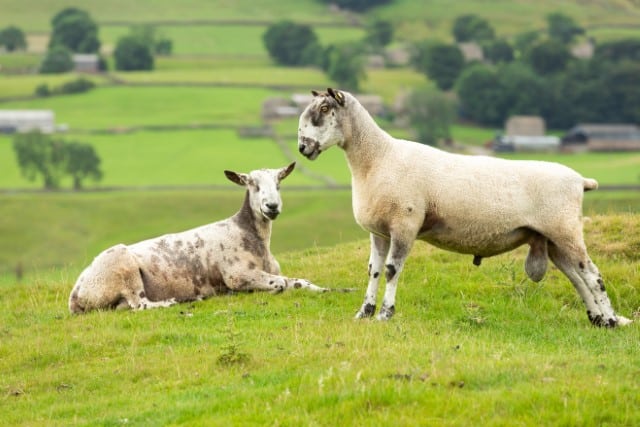
You should pay careful attention to the nutrition for your rams before breeding season, too.
Beginning about one month to six weeks prior to the beginning of breeding season, you should put your rams on a progressively higher plane of nutrition. By the time breeding season is about to begin, your rams should ideally have at least a body condition of 3.5 out of 5.
Be Mindful of Ram Condition During Breeding Season
It’s important to properly maintain ram condition and health during breeding season. If the weather will be hot during breeding, take care to ensure the ram doesn’t become exhausted.
Consider choosing cooler times of the day, such as early evening and nighttime, for breeding so that heat is less likely to become an issue.
On our farm we would sometimes pull the ram away from the ewes in the morning so that he had his own water and food and time to rest and recover, turning him back in with his ewes once things cooled down late in the afternoon.

